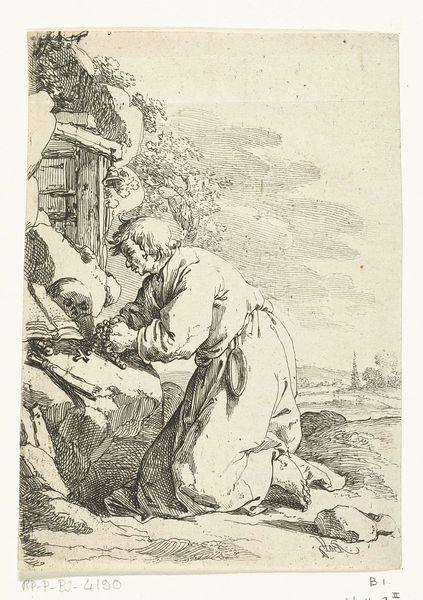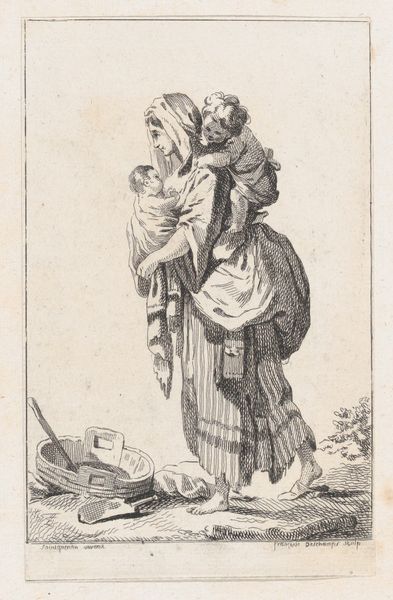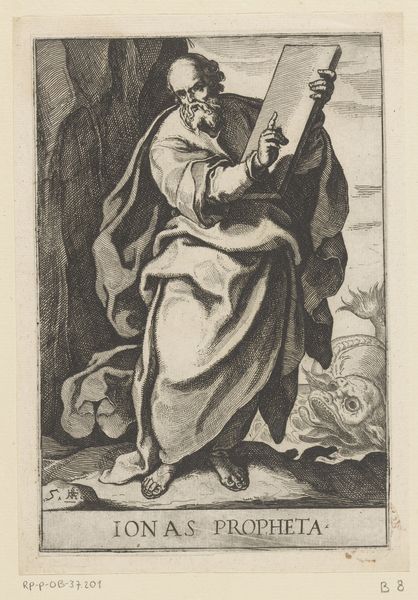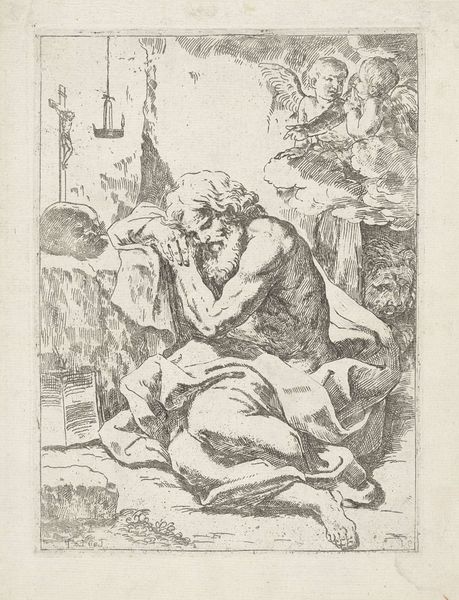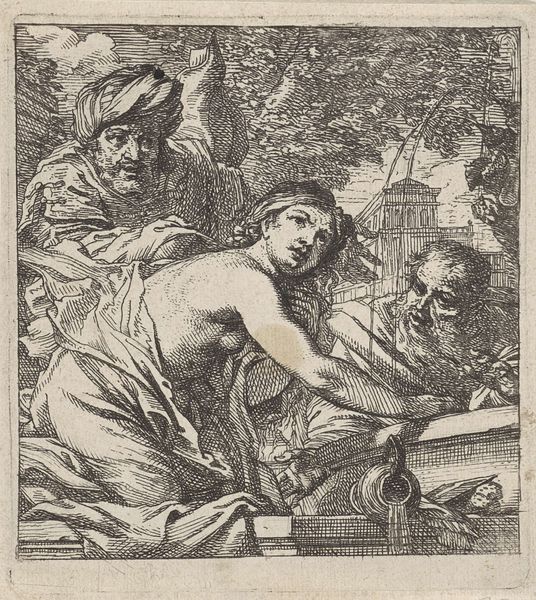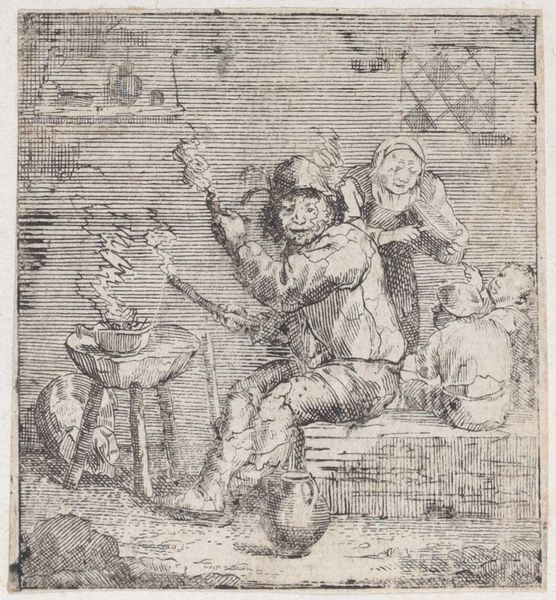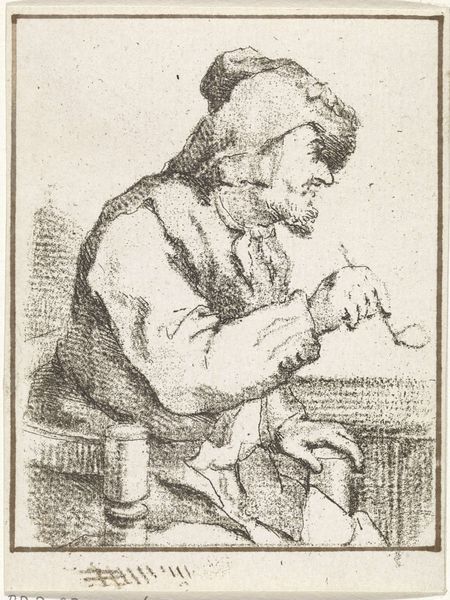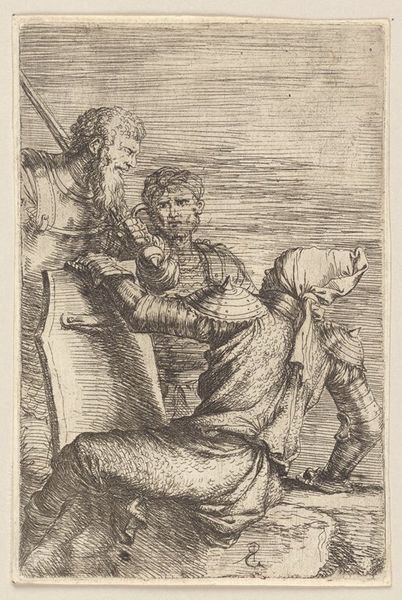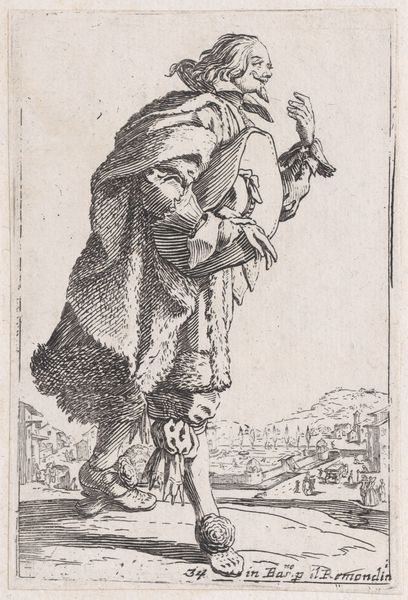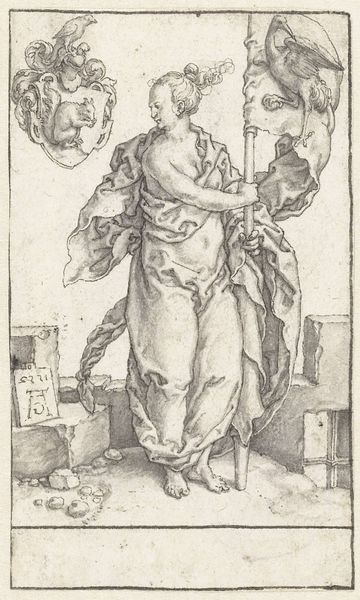
print, etching
#
narrative-art
#
baroque
# print
#
etching
#
figuration
#
genre-painting
Dimensions: height 141 mm, width 92 mm
Copyright: Rijks Museum: Open Domain
Editor: So this is *Man die geld telt* by Jan de Bisschop, made sometime between 1638 and 1671. It's an etching, so a print, and the figure is counting coins, I suppose. It feels very…serious. What do you see in this piece, that I might be missing? Curator: Ah, indeed! At first glance, we see a man absorbed in the act of counting, but look closer. Money often carries immense symbolic weight. Think about what coins represented in the 17th century. It's not just wealth. What feelings does that trigger for you? Editor: Well, a little anxiety, maybe? There are never enough coins! And if you have coins, others may want to take them… It reminds me that economic survival was often quite tenuous then. Curator: Precisely. The very act of counting signifies concerns, anxieties, even obsessions surrounding value and security. Consider the way he's hunched over, almost shielding his coins. Can you perceive the vulnerability in his posture, the fear of exposure? And consider where the light falls - on the money, drawing your attention to this cultural fixation. Editor: I hadn't thought of it that way. It's interesting how a simple genre scene reflects larger societal anxieties about wealth. I suppose it makes the artwork timeless, because the feelings are still quite recognizable. Curator: Yes, these archetypal images often tap into our shared cultural memory, bridging past and present anxieties through visual symbols. It is an embodiment of enduring human anxieties about resource, scarcity, and perhaps, moral corruption, don't you think? It seems even now, anxieties endure about similar matters of fortune. Editor: Definitely! I'll never look at someone counting change the same way again! Curator: Nor I. This piece seems simple at first, but truly evokes and perpetuates emotions related to economics through the ages.
Comments
No comments
Be the first to comment and join the conversation on the ultimate creative platform.
